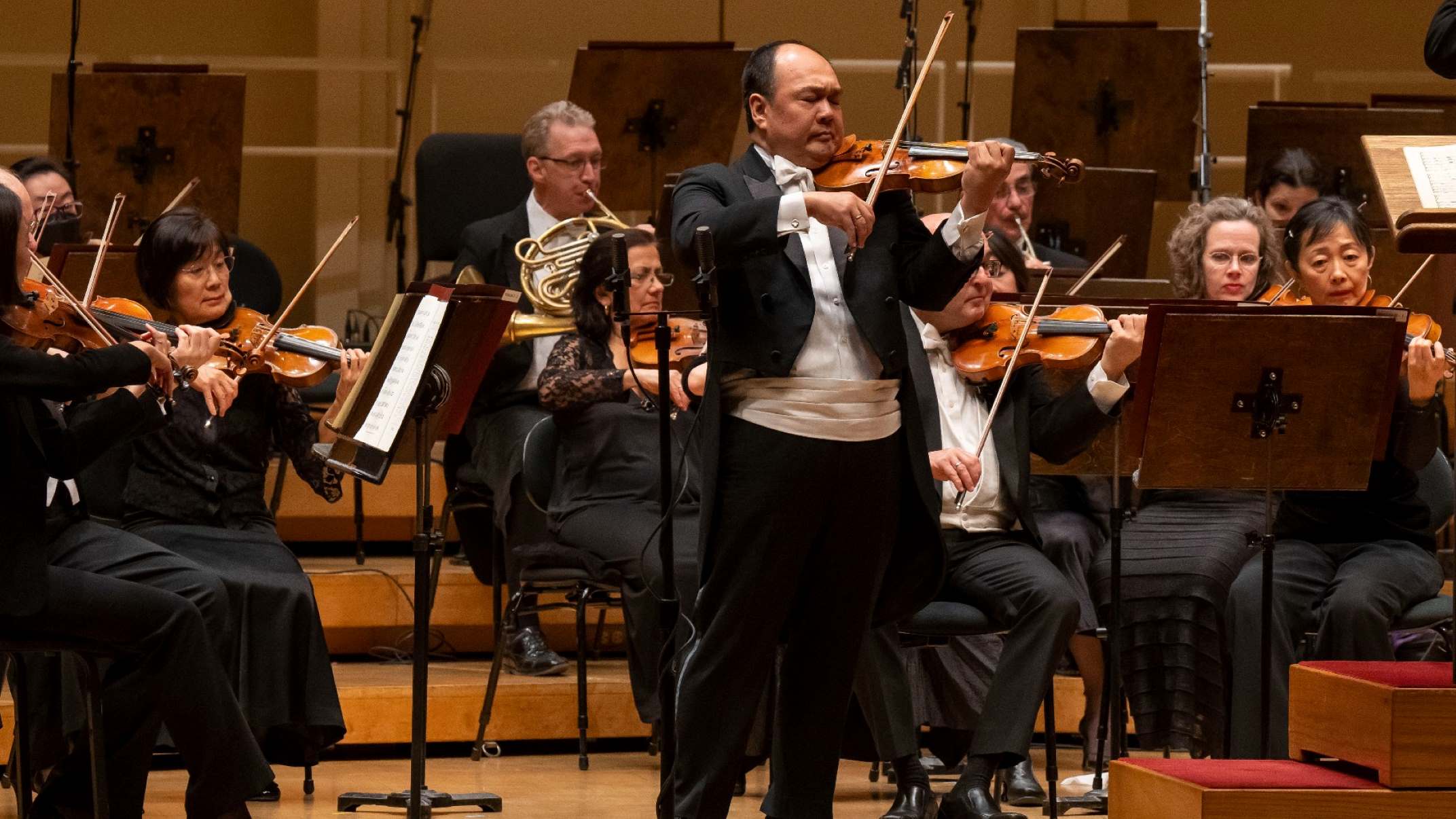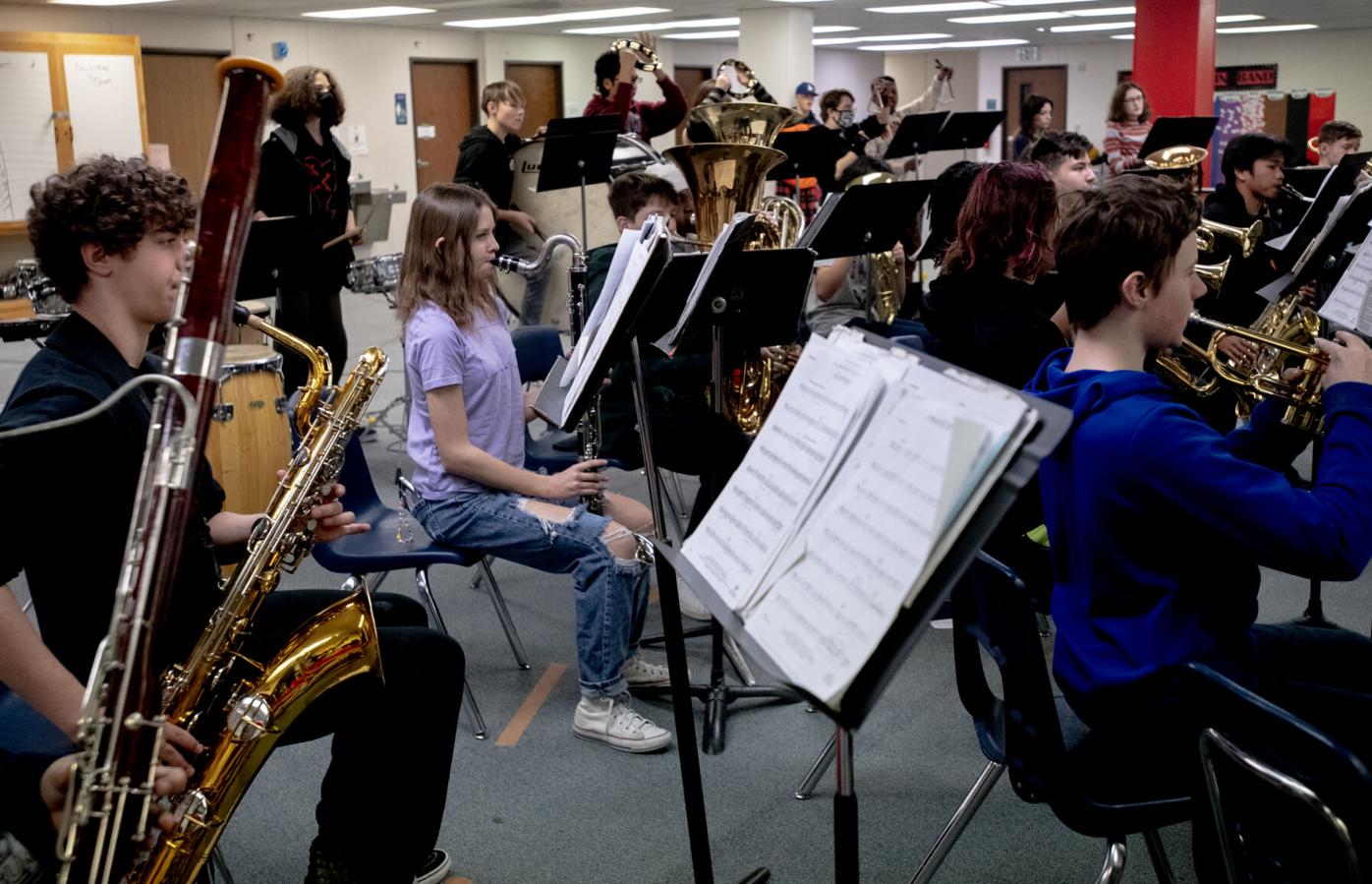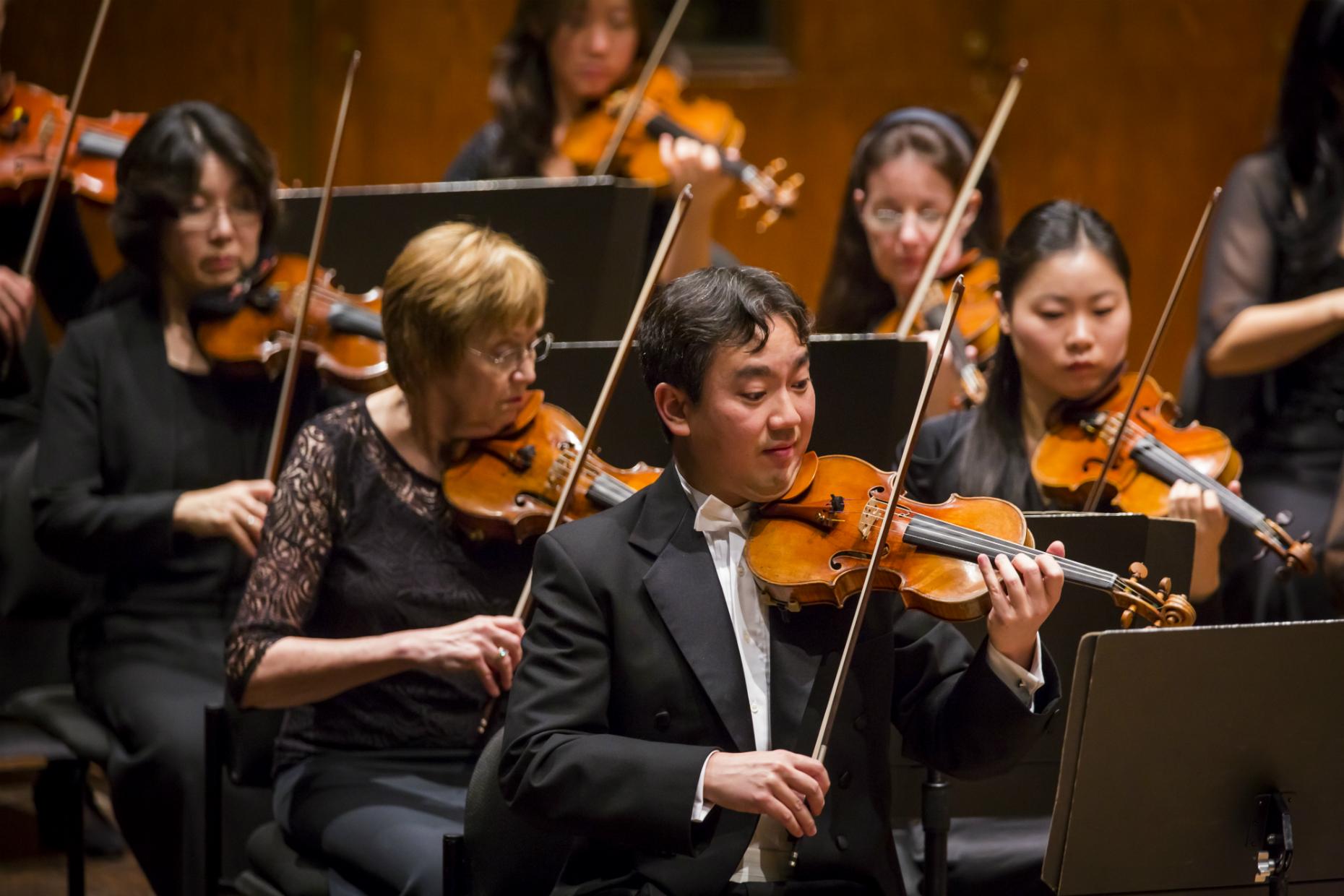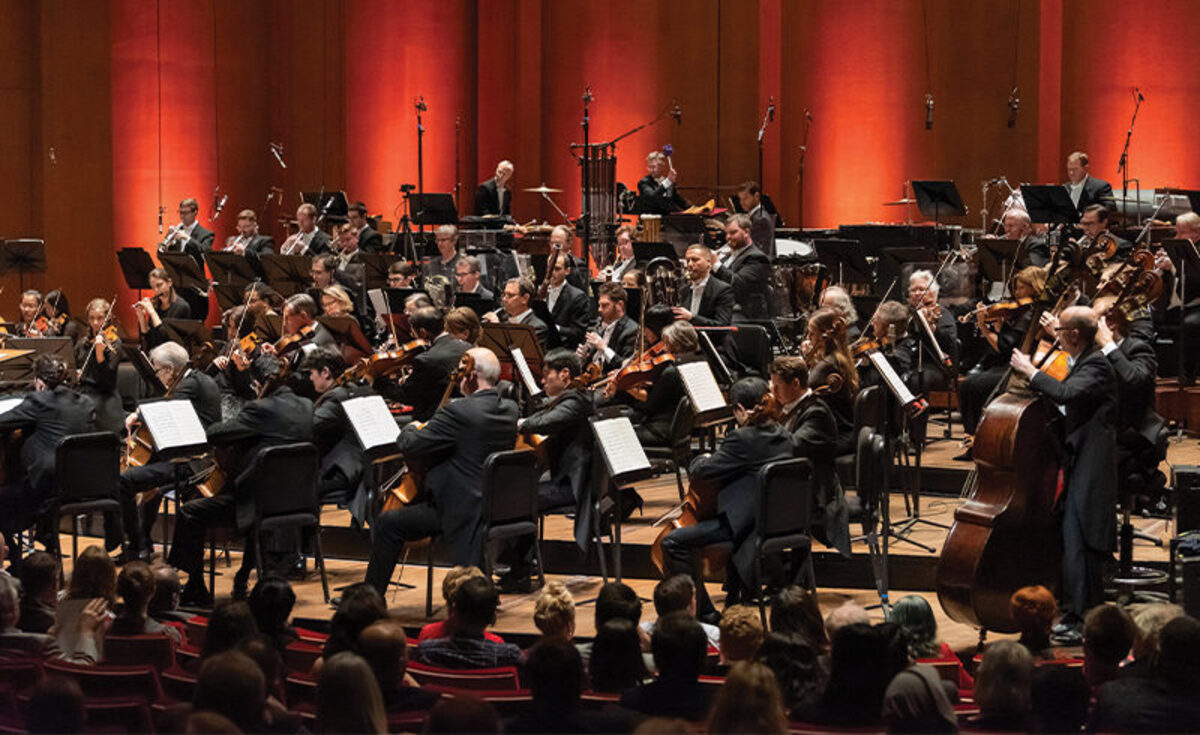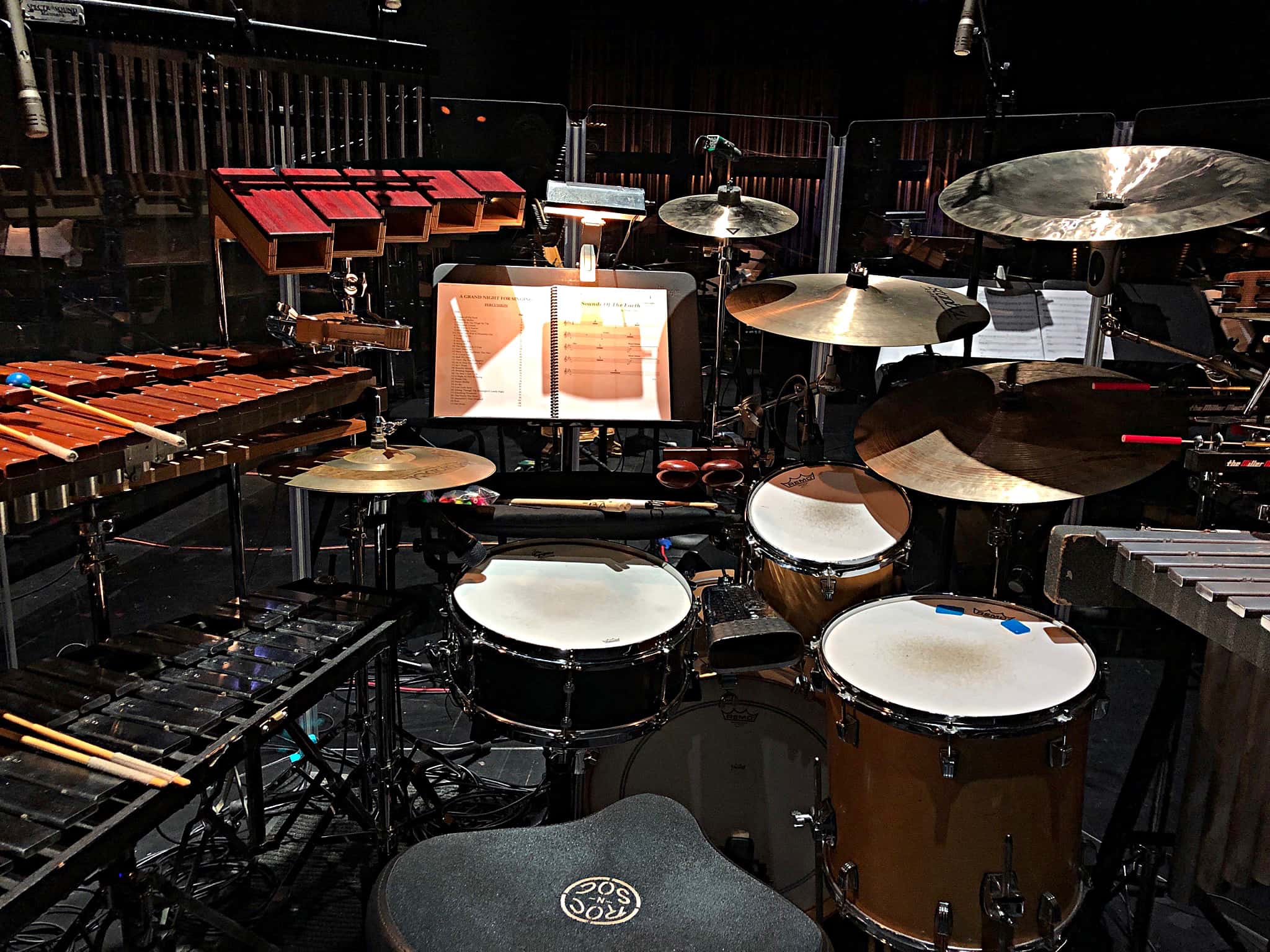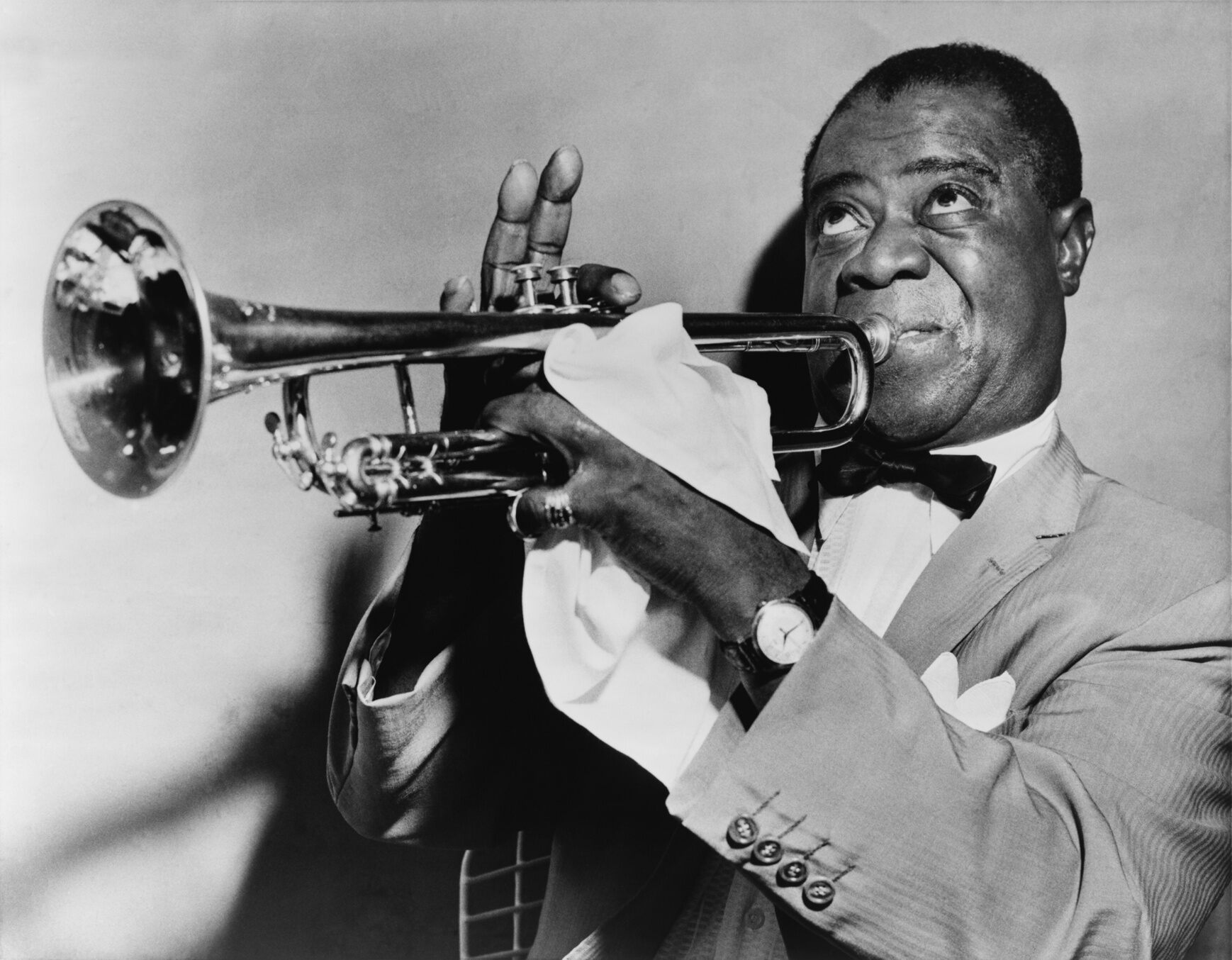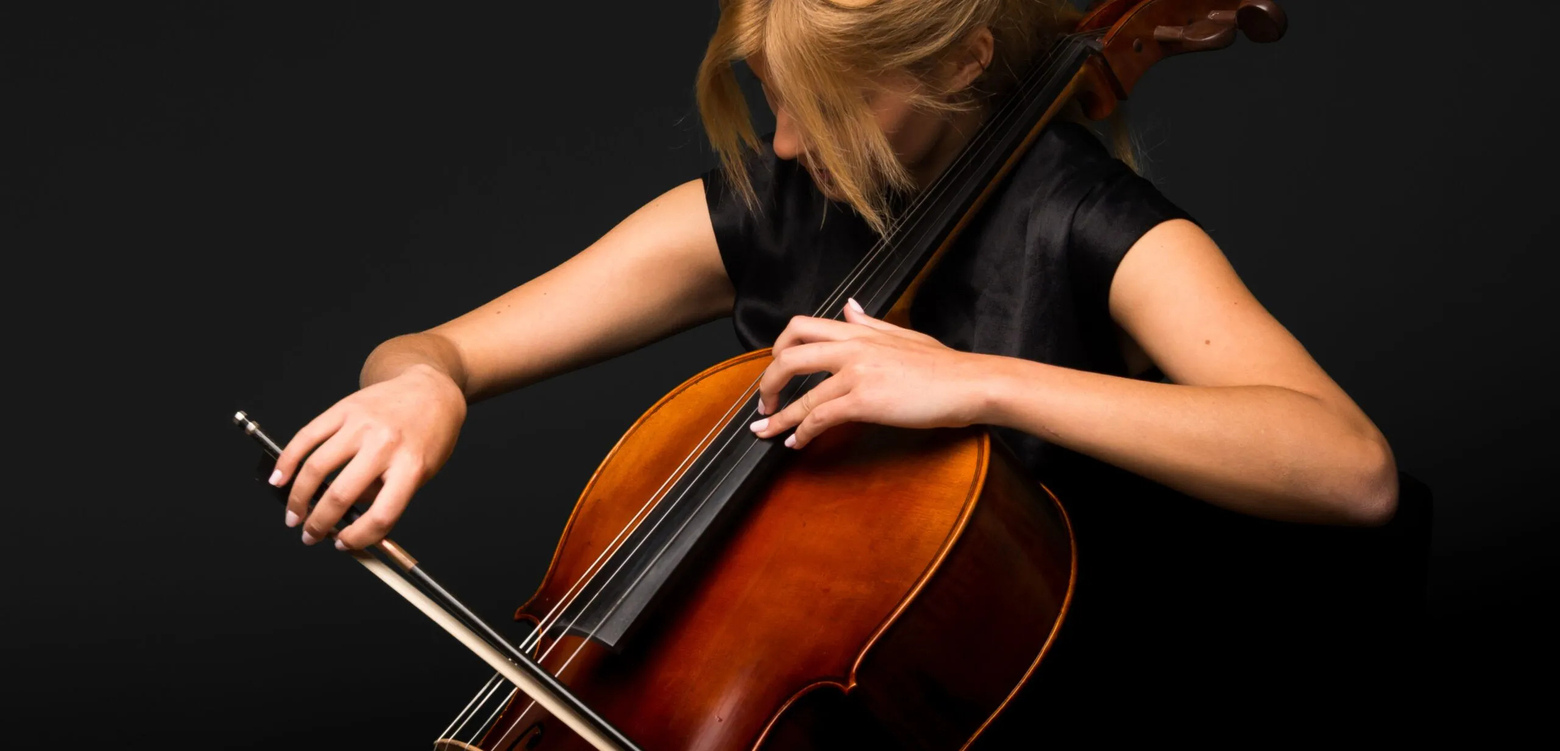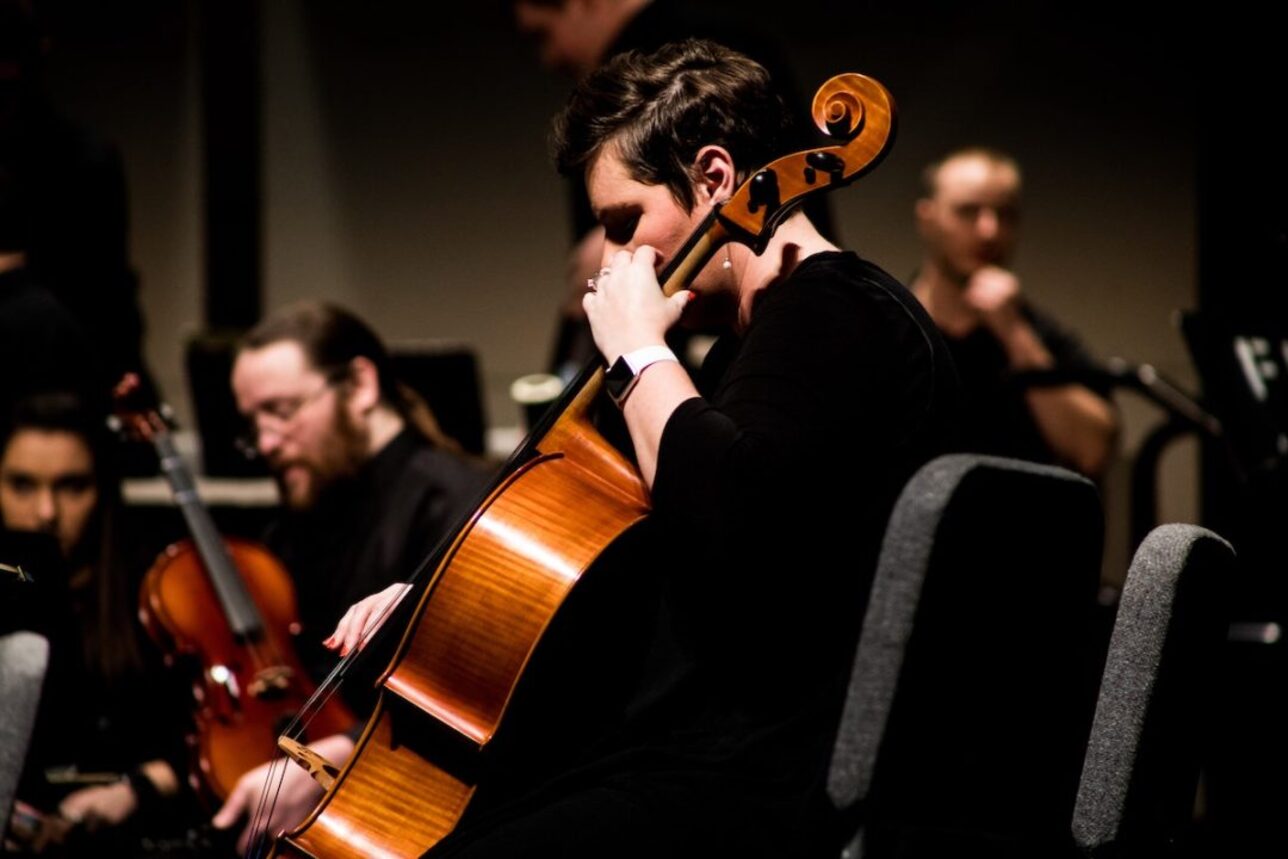Home>Production & Technology>Orchestra>What Instruments Are In An Orchestra


Orchestra
What Instruments Are In An Orchestra
Published: February 24, 2024
Discover the diverse range of instruments in an orchestra, from strings and woodwinds to brass and percussion. Learn about the unique roles each section plays in creating harmonious symphonies. Uncover the magic of orchestral music today!
(Many of the links in this article redirect to a specific reviewed product. Your purchase of these products through affiliate links helps to generate commission for AudioLover.com, at no extra cost. Learn more)
Table of Contents
Introduction
An orchestra is a captivating ensemble that brings together a diverse array of musical instruments, each contributing its unique timbre and character to create harmonious and melodious symphonies. From the soaring melodies of the violins to the resonant depths of the double basses, the orchestra is a testament to the power of collaboration and the beauty of musical expression.
In this article, we will delve into the fascinating world of orchestral instruments, exploring the distinct families that form the backbone of the orchestra. From the elegant strings to the resounding brass, the evocative woodwinds, and the vibrant percussion, each section of the orchestra is a vital piece of the musical tapestry, working in harmony to produce breathtaking performances that stir the soul and ignite the imagination.
As we embark on this musical journey, we will uncover the rich history and evolution of these instruments, gaining insight into their construction, playing techniques, and the pivotal role they play in shaping the orchestral sound. Whether you're a seasoned music aficionado or a curious newcomer, join us as we unravel the mysteries and marvels of the instruments that form the heart and soul of the orchestra.
String Instruments
The string section forms the core of the orchestra, exuding a captivating blend of elegance, passion, and versatility. As the foundation of the ensemble, these instruments encompass a wide range of timbres, from the soaring melodies of the violins to the rich, resonant tones of the cellos and double basses.
Violin
The violin, with its exquisite sound and expressive capabilities, holds a place of prominence in the orchestra. Its sweet, soaring melodies and agile articulation make it a standout presence in both classical and contemporary compositions. The violin's four strings are tuned in perfect fifths, allowing for a vast range of notes and intricate harmonies.
Viola
Slightly larger than the violin and possessing a warm, mellow timbre, the viola adds depth and richness to the string section. Its expressive quality and unique tonal characteristics make it an indispensable component of the orchestra, often providing rich harmonies and counter-melodies that complement the higher-pitched instruments.
Cello
With its deep, sonorous resonance and soul-stirring melodies, the cello commands attention with its expressive power. Its range spans from the warm depths of its lower register to the soaring heights of its upper notes, allowing for poignant and emotive performances that resonate with audiences.
Double Bass
As the largest and lowest-pitched member of the string family, the double bass provides a solid foundation for the orchestra's sound. Its deep, resonant tones add weight and gravitas to the ensemble, anchoring the harmonic structure and infusing compositions with a sense of depth and grandeur.
The string instruments, with their diverse tonal palettes and expressive capabilities, form the backbone of the orchestra, weaving intricate melodies, lush harmonies, and stirring accompaniments that elevate musical compositions to new heights. Their seamless interplay and collective artistry exemplify the timeless allure and enduring magic of orchestral music.
Woodwind Instruments
The woodwind section of the orchestra introduces a captivating array of instruments that produce their signature tones through the vibration of air within the instrument. From the enchanting melodies of the flute to the soulful resonance of the bassoon, each woodwind instrument contributes its unique timbre and expressive capabilities to the orchestral tapestry.
Flute
The flute, with its shimmering, ethereal sound, embodies grace and agility in the orchestra. Crafted from silver, gold, or other precious metals, the flute's slender, cylindrical body and intricate key system enable its player to produce a wide range of notes with remarkable precision and fluidity. Its sparkling high register and velvety lower tones add a celestial quality to orchestral compositions, evoking images of fluttering birds and gentle breezes.
Clarinet
The clarinet, with its warm, woody timbre and versatile range, holds a prominent position in the woodwind family. Constructed from ebony, grenadilla, or other exotic woods, the clarinet's cylindrical bore and single reed mouthpiece facilitate the production of expressive, mellifluous melodies and agile runs. Its evocative sound can convey a spectrum of emotions, from poignant melancholy to exuberant jubilation, making it a versatile and indispensable voice in the orchestra.
Oboe
The oboe, renowned for its haunting, reedy resonance, adds a distinctive and emotive quality to orchestral compositions. Crafted from select woods such as grenadilla or rosewood, the oboe's conical bore and double reed mouthpiece imbue its sound with a rich, penetrating character. Its expressive capabilities and ability to soar above the ensemble make it a compelling voice in the woodwind section, lending depth and poignancy to musical narratives.
Bassoon
The bassoon, with its deep, sonorous tones and commanding presence, anchors the woodwind section with its expressive power. Constructed from maple or other dense woods, the bassoon's long, coiled shape and double reed mouthpiece produce a resonant, velvety sound that adds weight and gravitas to orchestral compositions. Its agile articulation and rich harmonic capabilities make it a versatile and indispensable component of the orchestra.
The woodwind instruments, with their diverse tonal palettes and expressive capabilities, infuse orchestral compositions with a wealth of colors and textures, from the crystalline purity of the flute to the earthy warmth of the bassoon. Their seamless interplay and collective artistry exemplify the timeless allure and enduring magic of orchestral music.
Brass Instruments
The brass section of the orchestra commands attention with its resplendent timbre and commanding presence. Comprising a diverse array of instruments, the brass section infuses orchestral compositions with its bold, triumphant sound and majestic grandeur. From the regal fanfares of the trumpet to the noble resonance of the trombone and the commanding depths of the tuba, each brass instrument contributes its unique tonal qualities and expressive capabilities to the orchestral tapestry.
Trumpet
The trumpet, with its brilliant, penetrating sound and soaring melodies, stands as a beacon of power and brilliance in the brass section. Crafted from gleaming brass or silver, the trumpet's cylindrical bore and iconic bell shape enable its player to produce a wide range of notes with remarkable clarity and precision. Its regal fanfares, triumphant calls, and agile flourishes add a vibrant, heroic quality to orchestral compositions, evoking images of majestic processions and triumphant celebrations.
French Horn
The French horn, with its warm, enveloping tones and noble resonance, lends a rich, mellifluous character to the brass section. Its coiled, conical shape and flared bell facilitate the production of velvety, expressive melodies and harmonious blends. Whether evoking pastoral landscapes or soaring lyricism, the French horn's evocative sound adds depth and grandeur to orchestral compositions, infusing them with a sense of majesty and emotional richness.
Trombone
The trombone, with its bold, sonorous voice and commanding presence, anchors the brass section with its expressive power. Its elongated, cylindrical shape and slide mechanism enable its player to produce resonant, expressive tones and agile glissandi. Whether conveying noble solemnity or exuberant exultation, the trombone's versatile sound adds weight and gravitas to orchestral compositions, enriching them with a sense of grandeur and emotional depth.
Tuba
As the largest and lowest-pitched member of the brass family, the tuba provides a solid foundation for the orchestra's sound. Its deep, resonant tones and commanding presence add weight and authority to the ensemble, anchoring the harmonic structure and infusing compositions with a sense of depth and grandeur. The tuba's majestic sound resonates with power and dignity, creating a formidable presence that underpins the orchestral tapestry with its commanding voice.
The brass instruments, with their regal timbres and commanding presence, infuse orchestral compositions with a sense of grandeur, power, and emotional depth. From the triumphant fanfares of the trumpet to the noble resonance of the French horn and the commanding depths of the tuba, the brass section exemplifies the timeless allure and enduring magic of orchestral music.
Percussion Instruments
The percussion section of the orchestra is a vibrant and dynamic force that adds rhythmic vitality, textural richness, and dramatic flair to orchestral compositions. Comprising an eclectic array of instruments, the percussion section encompasses a diverse range of timbres, from the shimmering resonance of cymbals to the thunderous impact of timpani and the intricate rhythms of the snare drum. These instruments, often regarded as the heartbeat of the orchestra, play a pivotal role in shaping the rhythmic landscape and infusing compositions with energy, drama, and evocative sonic textures.
Timpani
The timpani, also known as kettle drums, commands attention with its majestic presence and resonant, thunderous tones. These large, bowl-shaped drums, equipped with tunable calfskin or plastic heads, produce deep, reverberating sounds that add weight and grandeur to orchestral compositions. The timpani's melodic capabilities and expressive power make it a versatile and indispensable voice in the percussion section, lending rhythmic propulsion and dramatic impact to musical narratives.
Snare Drum
The snare drum, with its crisp, incisive sound and versatile rhythmic capabilities, adds a vibrant and dynamic element to the percussion section. Its tightly stretched, resonant drumhead and distinctive snares create a sharp, distinctive sound that can range from delicate whispers to thunderous rolls. The snare drum's rhythmic precision and expressive potential make it an essential component of the percussion ensemble, infusing compositions with rhythmic complexity and dramatic punctuation.
Cymbals
The cymbals, with their shimmering, metallic resonance and dramatic impact, introduce a captivating array of timbres and textures to orchestral compositions. Crafted from bronze or brass alloys, the cymbals' dynamic range spans from delicate, ethereal crashes to explosive, thunderous crescendos. Their evocative soundscapes and dramatic flourishes add a touch of brilliance and spectacle to the percussion section, elevating the rhythmic landscape with their expressive potential and vibrant sonic palette.
Other Percussion Instruments
In addition to the timpani, snare drum, and cymbals, the percussion section encompasses a diverse array of instruments, including the bass drum, tambourine, triangle, xylophone, marimba, and a myriad of auxiliary percussion instruments. Each instrument contributes its unique timbre, rhythmic textures, and expressive capabilities, enriching orchestral compositions with a kaleidoscope of sonic colors and rhythmic intricacies. Whether evoking thunderous climaxes, delicate rhythmic nuances, or dramatic punctuation, the percussion section infuses orchestral music with its dynamic energy and evocative power.
The percussion instruments, with their diverse timbres, rhythmic vitality, and dramatic impact, form the rhythmic heartbeat of the orchestra, infusing compositions with energy, drama, and evocative sonic textures. From the majestic thunder of the timpani to the crisp articulation of the snare drum and the shimmering resonance of the cymbals, the percussion section exemplifies the timeless allure and enduring magic of orchestral music.
Other Instruments in the Orchestra
In addition to the core sections of strings, woodwinds, brass, and percussion, the orchestra incorporates a diverse array of other instruments that enrich its sonic tapestry and expand its expressive capabilities. These instruments, often referred to as the "auxiliary" or "ancillary" instruments, contribute unique timbres, textures, and colors to orchestral compositions, enhancing their emotional depth and sonic richness.
Harp
The harp, with its celestial resonance and ethereal beauty, holds a revered place in the orchestra. Its cascading arpeggios, shimmering glissandi, and lush harmonies add a touch of enchantment and elegance to orchestral compositions. The harp's evocative soundscapes and delicate timbres evoke images of celestial realms and pastoral serenity, infusing compositions with a sense of wonder and enchantment.
Piano
The piano, with its expansive range and expressive capabilities, brings a wealth of tonal colors and harmonic richness to the orchestral palette. From thunderous fortissimos to tender pianissimos, the piano's dynamic versatility and expressive depth allow it to navigate a wide spectrum of emotions and moods. Its commanding presence and virtuosic potential make it a captivating and indispensable voice in the orchestra, adding depth, drama, and melodic richness to musical narratives.
Celesta
The celesta, with its delicate, bell-like tones and enchanting resonance, imparts a sense of magic and whimsy to orchestral compositions. Its ethereal timbres and sparkling articulation evoke images of fairy-tale enchantment and otherworldly beauty, adding a touch of mystery and allure to the orchestral tapestry.
Organ
The pipe organ, with its majestic power and resplendent grandeur, commands attention with its vast sonic capabilities. Its thunderous pedal tones, soaring reed stops, and majestic principals infuse orchestral compositions with a sense of awe and transcendence. Whether evoking the grandeur of sacred spaces or the dramatic sweep of symphonic landscapes, the organ's commanding presence and kaleidoscopic timbres add depth, grandeur, and emotional resonance to orchestral music.
Additional Percussion
Beyond the core percussion instruments, the orchestra often incorporates a myriad of additional percussion instruments, including the glockenspiel, vibraphone, marimba, and a diverse array of ethnic and world percussion instruments. These instruments contribute a kaleidoscope of rhythmic textures, melodic nuances, and evocative timbres, enriching orchestral compositions with their vibrant colors and expressive potential.
The inclusion of these auxiliary instruments underscores the orchestra's boundless sonic palette and its capacity for creative exploration and sonic innovation. Whether evoking celestial realms with the harp, summoning dramatic grandeur with the organ, or infusing rhythmic vitality with additional percussion, these instruments play a pivotal role in shaping the orchestral sound and expanding its expressive horizons.

